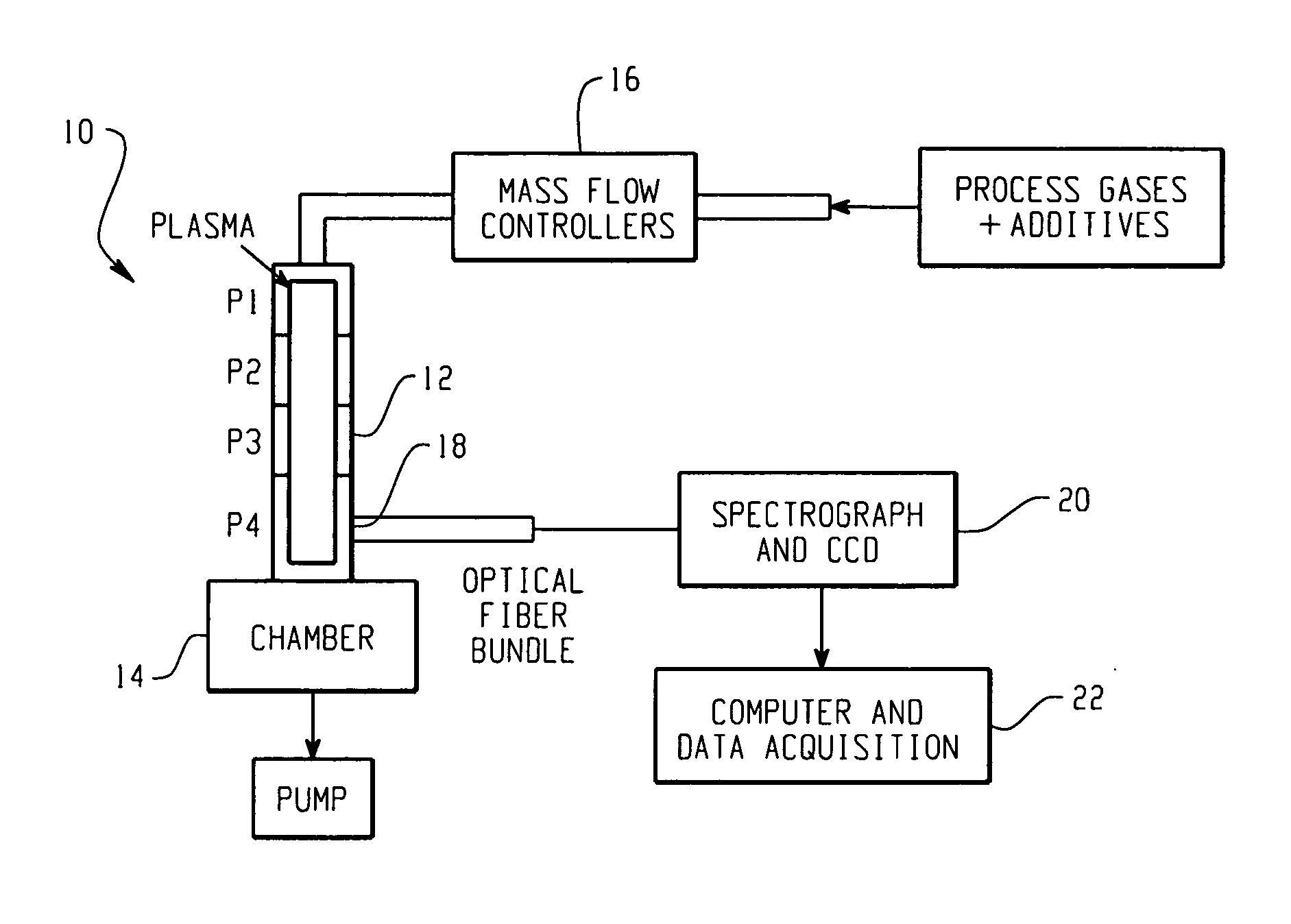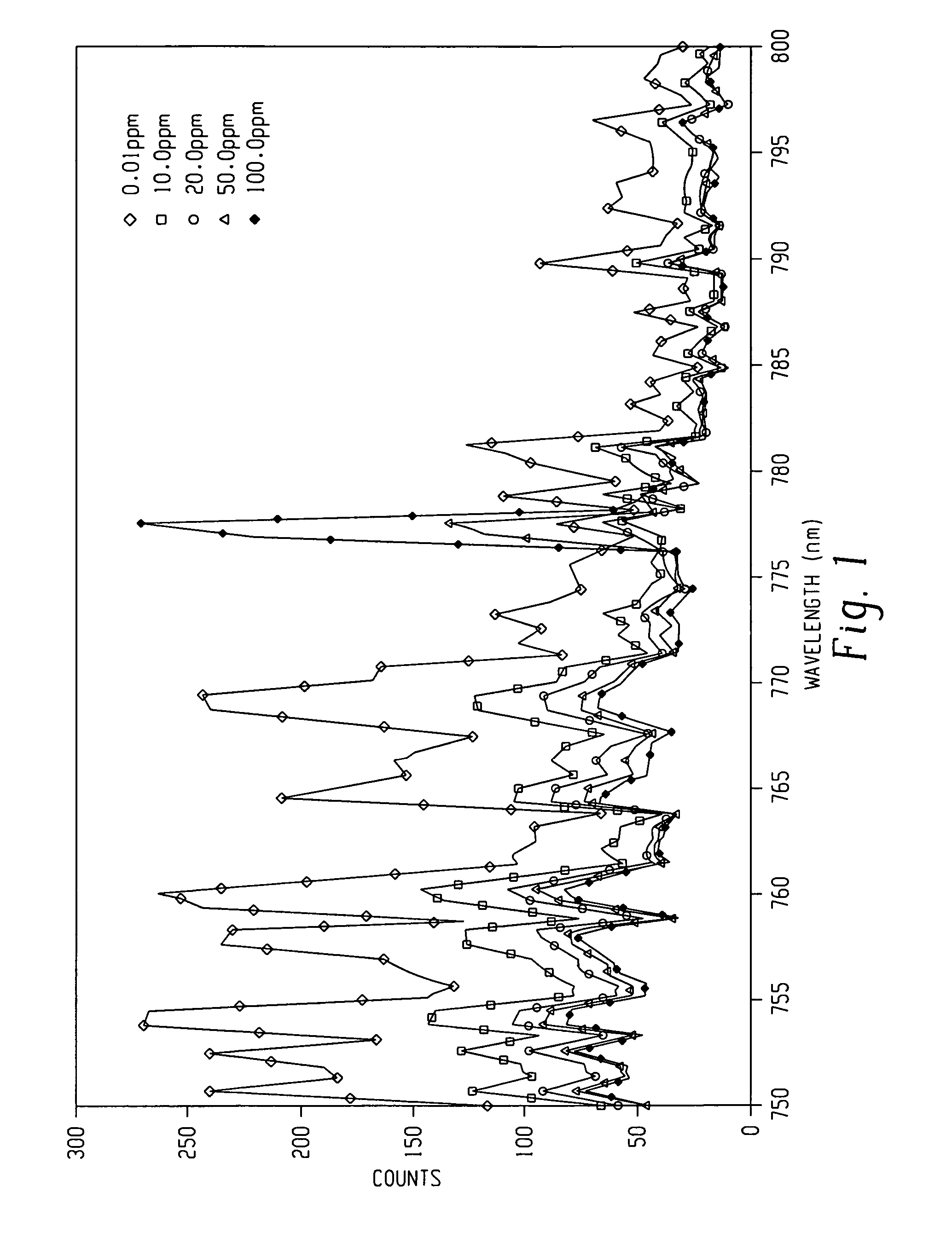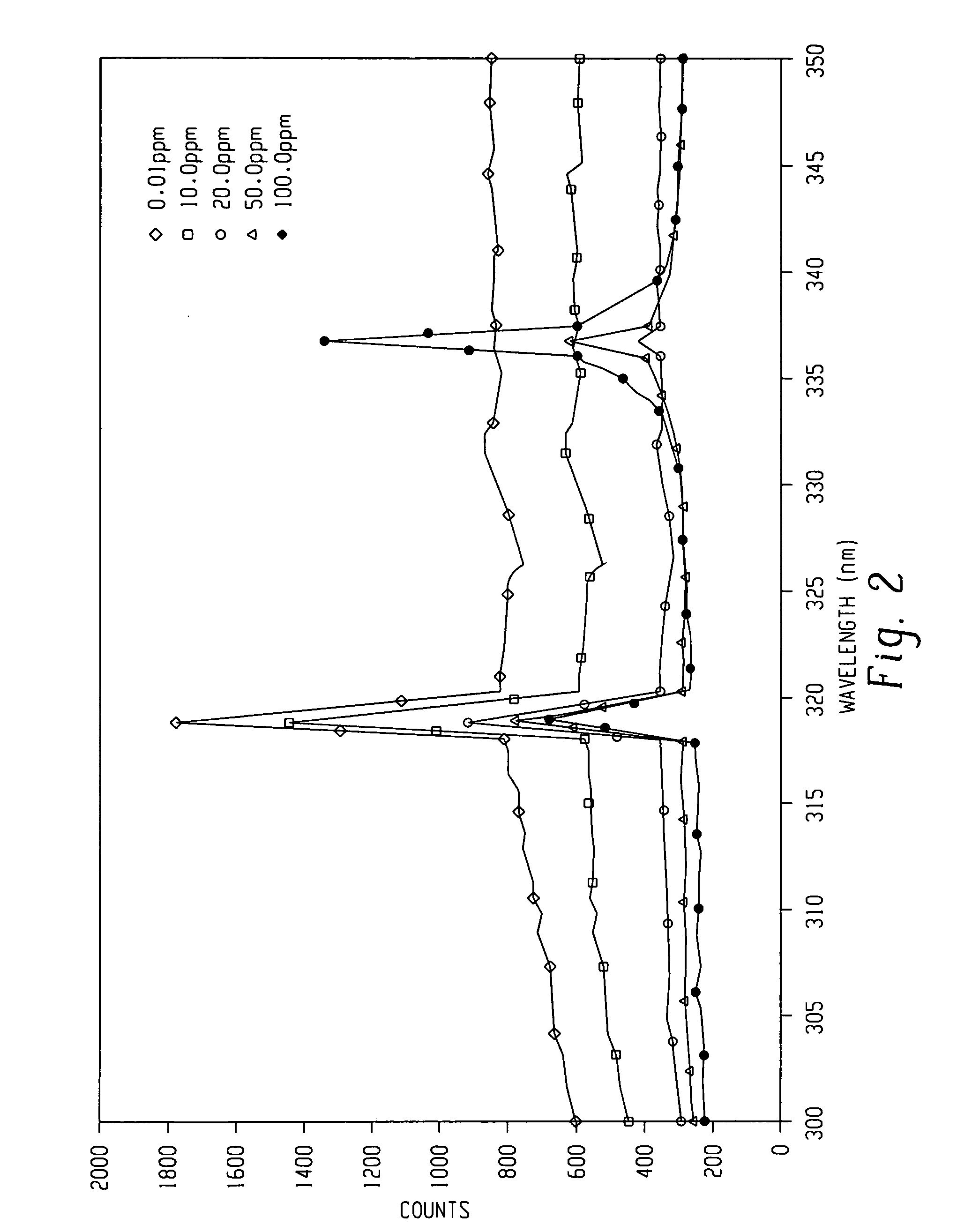Processes for monitoring the levels of oxygen and/or nitrogen species in a substantially oxygen and nitrogen-free plasma ashing process
a plasma ashing and oxygen-free technology, applied in the direction of semiconductor/solid-state device testing/measurement, instruments, photomechanical equipment, etc., can solve the problems of adversely affecting device performance, yield and reliability of the final integrated circuit, nitrogen-containing plasmas readily damage certain materials used in advanced integrated circuit manufacturing, and directly affecting device performan
- Summary
- Abstract
- Description
- Claims
- Application Information
AI Technical Summary
Benefits of technology
Problems solved by technology
Method used
Image
Examples
Embodiment Construction
[0025] Processes for monitoring nitrogen and / or oxygen species at levels less than 100 ppm in substantially oxygen and / or nitrogen free plasmas generally include monitoring an effect produced by low levels of oxygen and / or nitrogen species present in the plasma on other species generally abundant in the plasma. This so-called “effect detection” process monitors perturbations in the spectra specifically associated with species other than nitrogen and / or oxygen due to the presence of trace amounts of the oxygen and / or nitrogen species.
[0026] A typical substantially oxygen and nitrogen-free plasma ashing process includes generating reactive species substantially free of oxygen and / or nitrogen species from a plasma gas mixture and exposing a substrate to the reactive species. Exemplary substantially oxygen and nitrogen-free plasma ashing processes are described in U.S. Pat. No. 6,951,823, incorporated by reference herein in its entirety. Exemplary apparatuses for generating substantial...
PUM
| Property | Measurement | Unit |
|---|---|---|
| Fraction | aaaaa | aaaaa |
| Fraction | aaaaa | aaaaa |
| Fraction | aaaaa | aaaaa |
Abstract
Description
Claims
Application Information
 Login to View More
Login to View More - R&D
- Intellectual Property
- Life Sciences
- Materials
- Tech Scout
- Unparalleled Data Quality
- Higher Quality Content
- 60% Fewer Hallucinations
Browse by: Latest US Patents, China's latest patents, Technical Efficacy Thesaurus, Application Domain, Technology Topic, Popular Technical Reports.
© 2025 PatSnap. All rights reserved.Legal|Privacy policy|Modern Slavery Act Transparency Statement|Sitemap|About US| Contact US: help@patsnap.com



